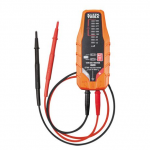I went on a service call today and had to figure out why a breaker was tripping . While trying to figure out the issue I noticed if I had the grounds in th j box apart and I went from neutral to ground I get 30 volts and the hot to ground be 80 volts
But if I had all my grounds in the j box tied together I would get proper voltage hot to ground 120v and 0v neutral to ground.
I understand why I received 80 volts hot to ground , I would contribute that to a bad ground. But why would I get voltage on the neutral? Thx
But if I had all my grounds in the j box tied together I would get proper voltage hot to ground 120v and 0v neutral to ground.
I understand why I received 80 volts hot to ground , I would contribute that to a bad ground. But why would I get voltage on the neutral? Thx


